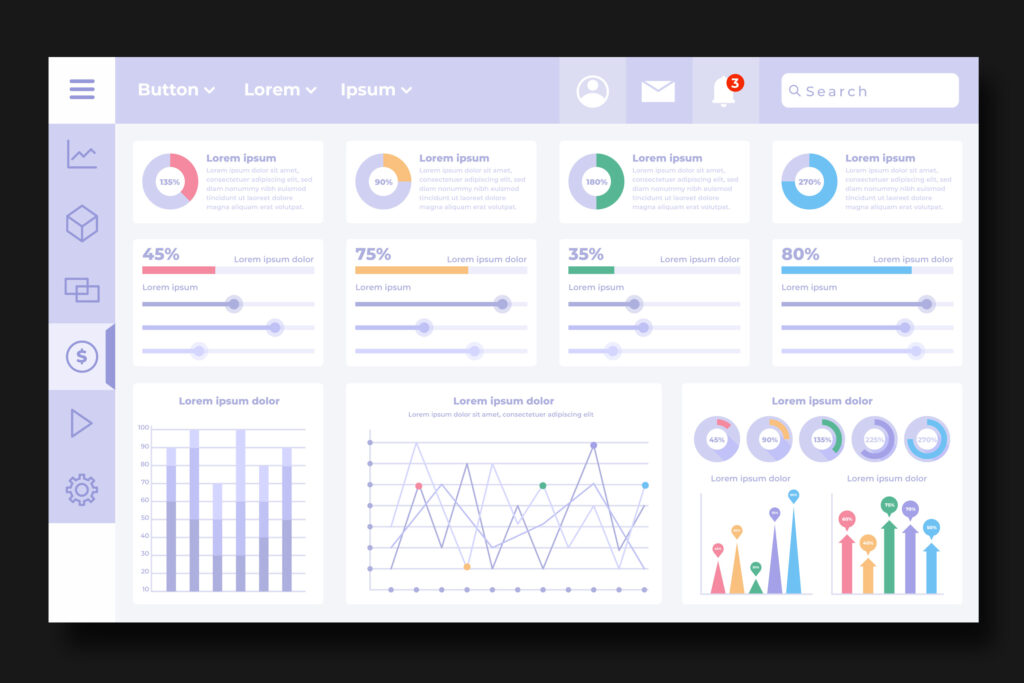How to Build a Sustainable Financial Model for Your Business

Financial modeling is the process of creating a formalized model of a company’s financial performance. For any company to attain long-term stability, growth, and investment readiness, a good financial model is essential. Creating a sustainable financial model helps you manage risks, attain realistic objectives, and adjust to changing market conditions. In this, we will learn how to create a financial model that can be used for financial projections as well as business planning.
Core Components of a Financial Model
The following core components should be incorporated in an in-depth startup financial model:
Revenue Projections

The in-depth revenue projection is the bedrock of any financial model. It refers to projecting the sales volume, pricing mechanisms, and customer acquisition rate. Incorporate sensible assumptions and historical data where possible. A reliable revenue forecast enables accurate business forecasting and supports long-term strategic financial planning.
Expense Breakdown and Cost Assumptions
Accurate expense estimates allow one to estimate the financial well-being of the business. Break down fixed and variable costs, include operating costs, and record all financial assumptions to ensure transparency. Good expense forecasting is based on realistic financial assumptions and contributes to a more sustainable business model.
Profit Margins and Cash Flow Projections
Profit margins are key measures of efficiency of the business. Combining this with cash flow planning allows tracking of liquidity, ensuring solvency, and efficiency in operations. Visualization of cash inflows and outflows can be achieved through a financial dashboard that supports cash flow planning and improves operational decision-making.
Key Metrics Table:
| Component | Description | Importance |
| Revenue forecast | Projected earnings over time | Determines growth goals |
| Expense prediction | Projected future business expenditure | Guarantees reliable budgeting |
| Planning of cash flows | Timing of cash inflow and outflow | Lends liquidity |
| Profit margin | Net profit through revenue divided | Guarantees profitability |
Ensuring Accuracy and Realism in Your Model
Data sources and methods
Utilize consistent internal data and market studies to develop your financial projections. Public reports, industry norms, and competitor data all make your assumptions more realistic. In business planning, strong data sources result in better scenario modeling and clearer financial projections.
Not Being Too Optimistic
The worst business forecasting mistake is being too optimistic. Being conservative in your projections insulates your sustainable financial model from volatility and builds stronger foundations for strategic financial planning.
Sensitivity and Scenario Analysis
Sensitivity analysis allows you to see how a variation in assumptions affects results. Scenario modeling helps you prepare for best-case, worst-case, and most-likely business situations, all essential for building a sustainable business with adaptable frameworks.
Aligning the Financial Model with Business Strategy
Numbers talking of Strategic Intentions
Financial strategic planning necessitates that you convert your business imagination into numerable figures. Your financial model must mirror prime targets—e.g., market entry or launch of new products. A strong startup financial model reflects your business purpose in numbers.
Planning for Scalability and Volatility of the Market
A sustainable business model must be scalable. Include elastic components that adapt to shifts in cost structure and revenue volatility across growth stages. This flexibility is key to business forecasting and keeping the financial dashboard current.
Adapting the Model to Various Funding Scenarios
Whether you are bootstrapped or have venture funding, your financial model must align with funding modalities. Add projections for equity financing, debt repayment, or grant-based income. Use scenario modeling to assess how funding affects your cash flow planning and P&L structure.
Tools and Templates to Streamline the Process
Software Suggestions
Most companies start in Excel, but SaaS programs like QuickBooks, Cube, or LiveFlow can make complex modeling easier. Choose tools based on your team size and reporting needs. These platforms help automate your p&l modeling, cash flow planning, and expense forecasting.
Pre-Built Templates vs. Model Customization
Pre-formatted templates offer speed, but custom models offer accuracy. In startup financial model planning, a hybrid approach is usually the best—especially for businesses focusing on sustainable business practices.
Visualization and Reporting Tips
Use graphs, a dashboard, and simple charts to make the reports easily digestible. Clarity is valued by stakeholders, especially in investor meetings or board reporting. Tools with a built-in financial dashboard make it easier to track your revenue forecast and support effective business planning.
Creating Robust Models for Long-Term Achievement
A sustainable financial model not only sustains current operations but also future growth. By integrating detailed financial assumptions, embracing strategic financial planning, and practicing frequent scenario modeling, your business remains dynamic and ready for change.
Update your model periodically and use it as a living document when making decisions. For advanced modeling support, ICFO Pro offers services in p&l modeling, expense forecasting, and strategic financial planning.
Want to take your financial planning to the next level?
Compare your business performance with industry benchmarks and top practices to identify growth opportunities and strengthen your decision-making process. Contact ICFO Pro for expert help with financial modeling, planning, and sustainability strategies tailored to your needs.



